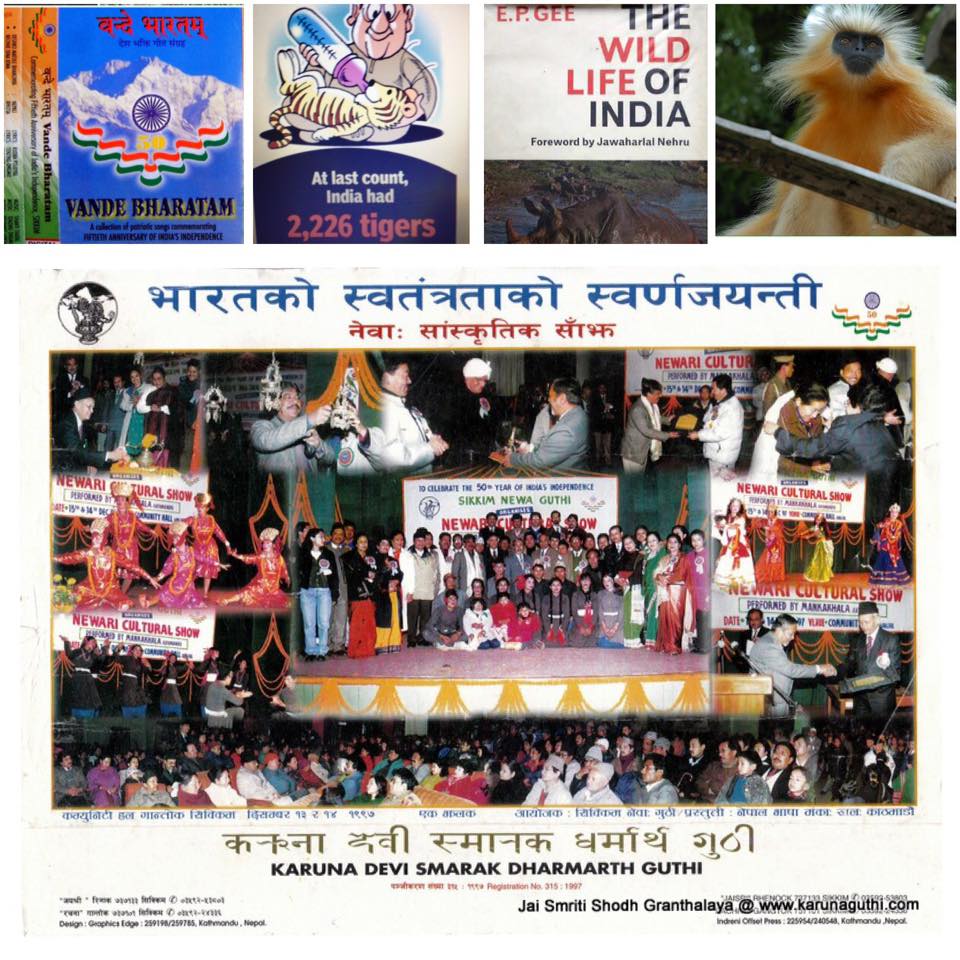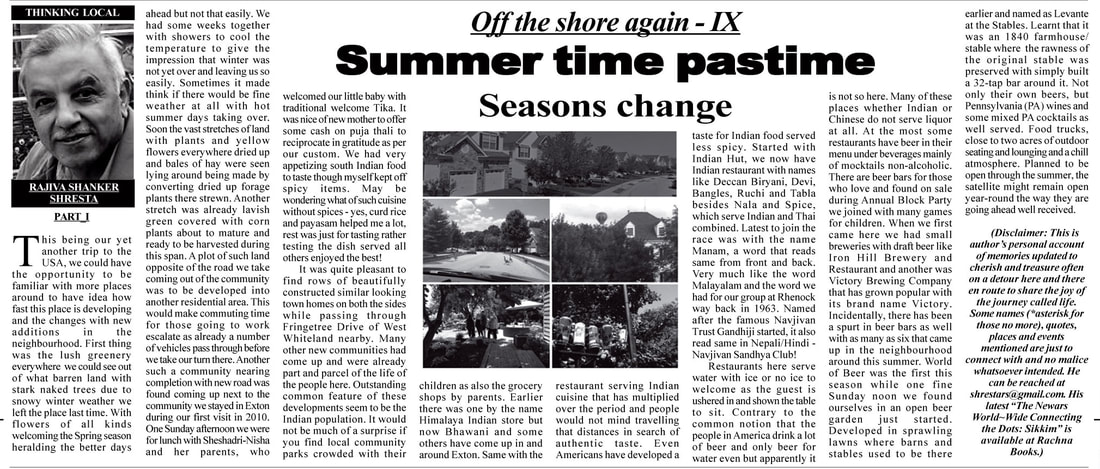August moments of my life
Celebration and tribulation
Rajiva Shanker Shresta
-0-
The month of August is, however, best remembered personally for two reasons of my life that gave a headstart to my career bringing in something meaningful to take me further on. It has been one of my life changing months to see me entering the second phase having completed my studies two years back but without any employment even in Sikkim. It was the year 1971 second day of this month found myself reporting to join my first ever job - not in Sikkim nor in any part of India or Nepal but in remote corner of the Himalayas to be in the wilderness of the Manas Game Sanctuary as its Game Warden with His Majesty's Royal Government of Bhutan. My education (having done M.Sc. in Zoology 1969 North Bengal University) and love for Nature took me there across the river Manas which was in turbulant spate to cross over in a ferry boat. A year later same date my return was fated but after drenched fully from a rising wave in the last lap that nearly swept off all five of us in the boat. It could not be anything less than a miracle to save me without the knowledge of swimming even to survive in the event of a mishap. It was a heart touching good bye from the forests that gave me all the experience to be amidst nature through all the seasons one could dream of. Only regret I have with the place is that I could not see a tiger though often ventured out with a Dukpa forest guard in search of one to have a glimpse to the place nearby the animal frequented as we had placed salt-lick blocks previously (except once when we confronted a herd of wild boars.) Not even from the tree-top house we constructed though visitors coming for a day or two were more fortunate that way. Pug marks around my residence were the only thing seen next morning suggesting of tiger visiting there the previous night. Project Tiger, an attempt to save the Indian tiger from extinction, was not started as yet and I remember Kailash Sankhala (1925-1994) naturalist and conservationist best known for his works in preserving tigers, had visited once when there. More from Wikipedia "Kailash Sankhala was the first conservationist who raised his voice in favour of protecting them. Project Tiger is a tiger conservation programme launched in 1973 by the Government of India during Prime Minister Indira Gandhi's tenure. The project aims at ensuring a viable population of Bengal tigers in their natural habitats and also to protect them from extinction, and preserving areas of biological importance as a natural heritage forever represented as close as possible the diversity of ecosystems across the tiger's distribution in the country." He has some six books on tiger to his credit. It was interesting to read about Tiger in the Times of India online on August 15, 2017 'India: An unauthorised biography of people, events, policies' - "We bring you the energy, fluidity and unpredictability of the seven decades post independence and the promise of the future." India@70 included at number "14 - Tiger, tiger burning bright - Project Tiger, India's flagship conservation project began in 1973 when tigers were in decline, their number guesstimated at 1,800. Despite setbacks that saw their number drop to 1,411 in 2006, the project has achieved. ...At last count India had 2,226 tigers - the number is growing!"
It was fascination for the Manas brought to limelight by E.P. Gee and his discovery Golden Langur mentioned in his classic book 'The Wildlife of India' (1964) we read in M.Sc. Wikipedia has some more to share here - "Edward Pritchard Gee (1904–1968) was a Cambridge educated, Anglo-Indian tea-planter and an amateur naturalist in Assam, India. He is credited with the 1953 discovery of Gee's golden langur. He is notable as an early influential wildlife conservationist, especially for his 1959 and 1963 surveys and recommendations resulting in the creation of Chitwan National Park, the first of nine national parks in Nepal.He is famous for his discovery of the langur species which is named after him, Gee's golden langur. He had heard reports of an unusual coloured primate and he organised an expedition in 1953. He managed to film the langurs near the Sankosh River on the border between Assam and Bhutan. Nehru's forward to Gee's book in February 1964 was one of the only pieces he ever wrote on wildlife conservation. In it he said, 'Life would become very dull and colourless if it did not have these magnificent animals and birds to look at and to play with.' Nehru called for more refuges for vanishing wildlife, but he died in May and Gee died four years later. It was the end of an era."
My batch-mates in the Royal Sikkim Civil Service viz., Badri Nath Sharma*, Madan Kumar Chettri, Tashi Topden* and Norbu Dadul Chingapa were already there in the (Lal Bahadur Shastri) National Academy of Administration at Mussoorie on the day I was returning from Bhutan. It was possible for me to be there a week later on the 9th day of August. This date 45 years ago in 1972 reporting there as the Probationer for two years' course was also reckoned as the date of my joining the Government of Sikkim. It was a long tenure of 35 odd years full of dedicated efforts to contribute something till the end though not without some tribulation. Life is neither always of smooth sails nor to be swept off that easily also. The lesson learnt from the mighty Manas that bad farewell overflowing all over me with great gusto!
Disclaimer: This is author’s personal account of memories updated to cherish and treasure often on a detour here and there en route to share the joy of the journey called life. Some names (*asterisk for those no more), quotes, places and events mentioned are just to connect with and no malice whatsoever intended. He can be reached at [email protected]. His latest "The Newars World~Wide Connecting the Dots : Sikkim" is available at Rachna Books.




 RSS Feed
RSS Feed
